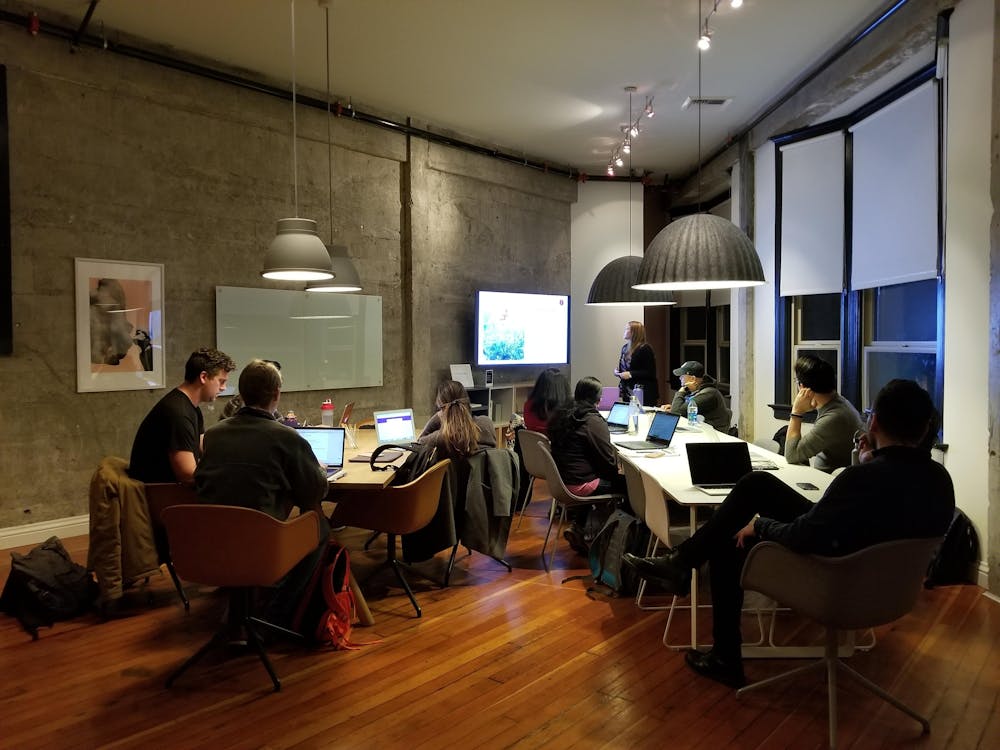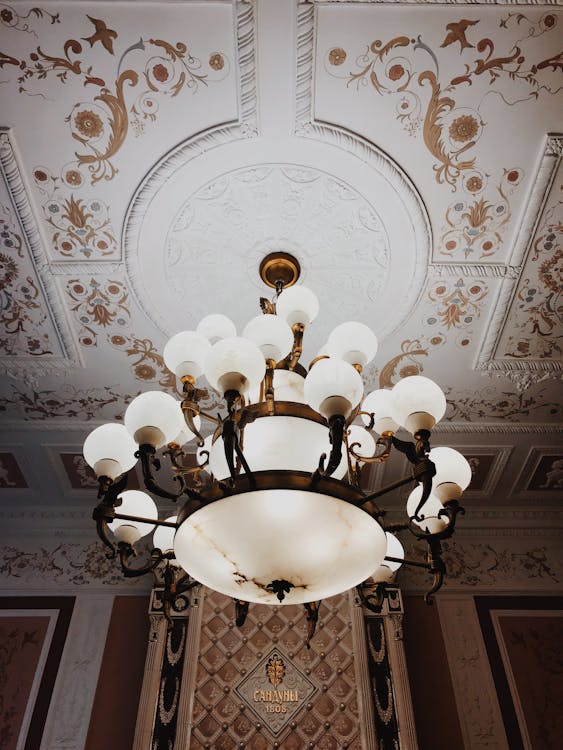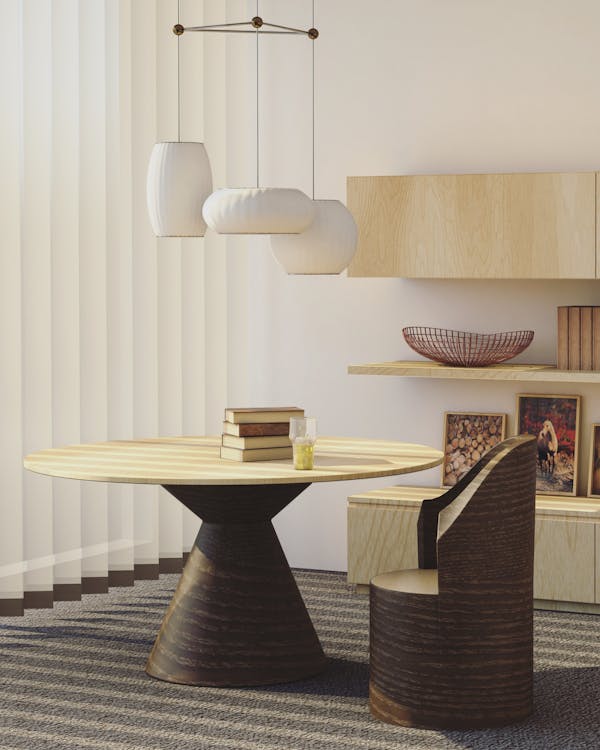Best Types of Lights for Your Home Workspace
In creating an effective home workspace, lighting plays a critical role. It affects productivity, comfort, and well-being. Proper lighting can reduce eye strain, improve mood, and boost productivity. We'll explore the best types of lights for your home workspace, considering factors like brightness, color temperature, and the positioning of lights to create an optimal working environment.
1. Understanding the Basics of Lighting
It's important to understand the basics of lighting and how it affects your workspace. The three main types of lighting to consider are:
- Ambient Lighting: This is the general lighting that illuminates the entire room. It's usually provided by ceiling lights or wall-mounted fixtures. Ambient lighting should create a uniform level of brightness, allowing you to move around the room safely.
- Task Lighting: As the name suggests, task lighting is focused on specific tasks, like reading, writing, or working on a computer. This type of lighting is usually brighter than ambient lighting and can be provided by desk lamps or under-cabinet lights.
- Accent Lighting: While less critical for functionality, accent lighting adds visual interest to your workspace by highlighting artwork, plants, or architectural details. It’s typically provided by spotlights or LED strips.
Balancing these three types of lighting creates a layered, well-lit environment that minimizes shadows and glare, reducing eye strain and fatigue.

2. Best Types of Ambient Lighting for Home Workspaces
Ambient lighting is the foundation of your workspace’s illumination. Here are the most effective options:
a. Ceiling Lights
Ceiling lights are a common choice for ambient lighting. They provide a uniform light source that can illuminate the entire room. Depending on your ceiling height and room size, you can choose from flush-mount, semi-flush-mount, or recessed ceiling lights.
- Flush-Mount Lights: Ideal for rooms with low ceilings, these fixtures sit close to the ceiling and provide broad, diffused light.
- Semi-Flush-Mount Lights: These hang a few inches from the ceiling, offering a balance between flush-mount and pendant lights. They’re suitable for rooms with moderate ceiling height.
- Recessed Lights: Installed directly into the ceiling, recessed lights offer a clean, minimalist look. They can be spaced evenly across the ceiling to create a uniform light source without taking up visual space.
b. Pendant Lights
Pendant lights hang from the ceiling and can serve as both ambient and task lighting, depending on their placement and design. When used as ambient lighting, they should be hung high enough to spread light evenly across the room.
- Multi-Light Pendants: These fixtures feature multiple bulbs or shades and can cover a wider area, making them ideal for larger workspaces.
- Single-Light Pendants: These work well in smaller spaces or can be grouped together for a customizable lighting solution.

c. Chandeliers
Chandeliers are a stylish option for ambient lighting, offering a mix of functionality and aesthetics. They work best in larger rooms with high ceilings. Modern chandeliers come in various designs, from minimalist to elaborate, allowing you to choose one that complements your workspace’s decor.
3. Task Lighting: Focusing on the Details
Task lighting is essential for reducing eye strain and improving focus on detailed tasks. Here are some of the best types of task lighting for a home workspace:
a. Desk Lamps
Desk lamps are the most common type of task lighting and come in various styles, from adjustable arm lamps to compact LED models. When choosing a desk lamp, consider the following factors:
- Adjustability: Look for a lamp with an adjustable arm or neck, allowing you to direct light where you need it most.
- Brightness: A lamp with adjustable brightness levels is ideal, as it allows you to customize the light intensity based on the task.
- Color Temperature: Desk lamps with adjustable color temperature settings can help reduce eye strain by mimicking natural daylight during the day and warmer light in the evening.

b. LED Desk Lamps
LED desk lamps are energy-efficient, long-lasting, and often come with advanced features like touch controls, USB charging ports, and memory settings. They provide a bright, focused light that is ideal for tasks requiring precision, such as reading, writing, or working on a computer.
c. Under-Cabinet Lighting
Under-cabinet lights are installed beneath shelves or cabinets and provide focused light directly onto the workspace. They are ideal for workstations with built-in shelves or cabinets, as they eliminate shadows and provide ample light for tasks.
- LED Strip Lights: These are flexible, easy to install, and can be cut to size. LED strips are an excellent option for creating a seamless, uniform light source under cabinets.
- Puck Lights: Small, circular lights that can be installed under cabinets or shelves. Puck lights provide focused, bright light and are available in both battery-operated and hardwired versions.
4. Accent Lighting: Adding Visual Interest
While accent lighting isn’t essential for functionality, it adds character to your workspace and can create a more pleasant and inviting environment. Here are some popular accent lighting options:
a. LED Strip Lights
LED strip lights can be used not only for under-cabinet task lighting but also as accent lighting. They can be placed behind monitors, under desks, or along the edges of shelves to add a soft, ambient glow to your workspace.
b. Spotlights
Spotlights are a versatile accent lighting option. They can be used to highlight artwork, plants, or other decorative elements in your workspace. Adjustable spotlights allow you to direct the light precisely where you want it, creating a dramatic effect.
c. Table Lamps
Table lamps can serve as both task and accent lighting. They add a decorative element to your workspace while providing additional light where needed. Choose a table lamp with a design that complements your workspace’s style and consider one with a dimmer switch for adjustable brightness.
5. Color Temperature and Brightness: Key Considerations
a. Color Temperature
Color temperature is measured in Kelvins (K) and describes the color of the light produced by a bulb. It ranges from warm to cool:
- Warm Light (2700K-3000K): This light is similar to the soft, yellow glow of a traditional incandescent bulb. It’s ideal for creating a cozy, relaxing atmosphere but may not be bright enough for detailed work.
- Neutral Light (3500K-4100K): This light is more balanced and closer to natural daylight. It’s a good option for general work tasks, providing a bright, neutral light that isn’t too harsh.
- Cool Light (5000K-6500K): This light is similar to daylight and is ideal for tasks that require high levels of concentration and detail. Cool light can help reduce eye strain and improve focus during long work sessions.

b. Brightness
Brightness is measured in lumens, and the right level depends on the size of your workspace and the specific tasks you perform. Here are some general guidelines:
- Ambient Lighting: 1500-3000 lumens for general illumination of the entire room.
- Task Lighting: 400-1000 lumens for focused light on specific tasks like reading or writing.
- Accent Lighting: 100-300 lumens for highlighting specific areas or objects.
Consider using dimmable lights to adjust the brightness according to your needs throughout the day.
6. Positioning Your Lights
Proper positioning of your lights is just as important as choosing the right type. Poor placement can lead to glare, shadows, and uneven lighting, which can cause eye strain and reduce productivity.
a. Avoid Direct Glare
Position lights so that they don’t shine directly into your eyes or reflect off your computer screen. Desk lamps should be placed to the side of your work area, with the light directed away from your eyes and towards the task.
b. Reduce Shadows
To minimize shadows, especially when working with papers or other physical tasks, position your task light on the opposite side of your dominant hand. This prevents your hand from casting shadows over your work.
c. Layer Your Lighting
Combine ambient, task, and accent lighting to create a balanced, well-lit workspace. This layering effect helps reduce eye strain by providing consistent light levels throughout the room.
d. Consider Natural Light
If possible, position your workspace near a window to take advantage of natural light. Natural light is the best light source for working, as it’s closest to daylight and can boost mood and productivity. However, be mindful of glare and adjust your window coverings as needed to control the amount of light entering the room.
7. Smart Lighting Solutions
Incorporating smart lighting into your workspace allows for greater control and customization. Smart lights can be adjusted via smartphone apps, voice commands, or automated schedules, offering convenience and energy efficiency.
a. Smart Bulbs
Smart bulbs can be controlled remotely and offer features like adjustable brightness, color temperature, and even color-changing options. They can be integrated with smart home systems like Amazon Alexa, Google Home, or Apple HomeKit.
b. Smart Light Strips
Like smart bulbs, smart light strips offer adjustable brightness and color options. They can be used as both task and accent lighting, adding versatility to your workspace lighting setup.
c. Smart Plugs and Switches
If you’re not ready to replace all your bulbs with smart versions, consider using smart plugs or switches. These allow you to control your existing lights remotely, schedule on/off times, and even automate lighting based on your daily routine.




